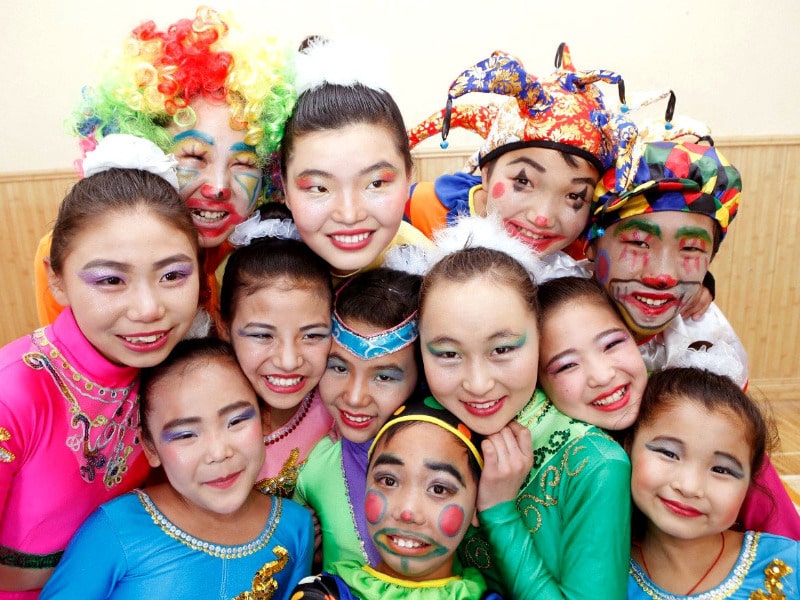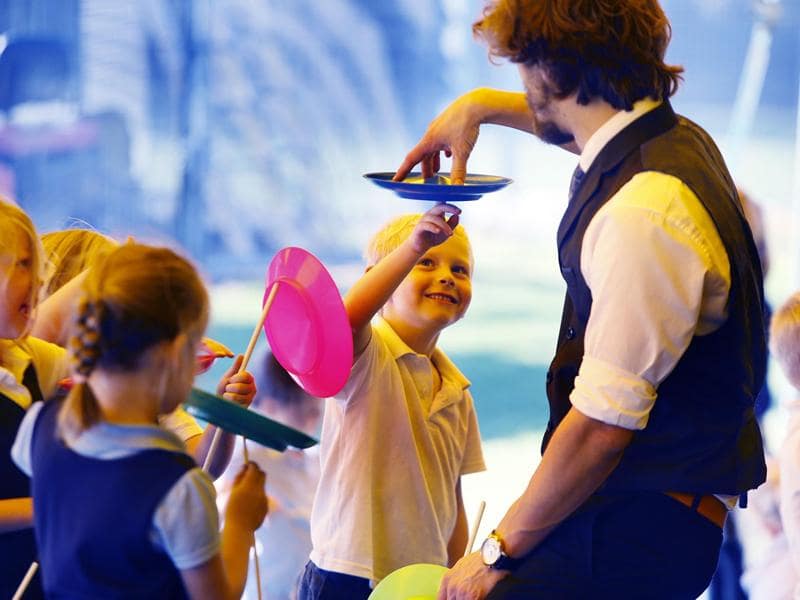
The circus constitutes a powerful playful aspect in the children’s environment, therefore, we assume that the attraction for the theme is practically assured. This fact gives a wide margin of action to the teacher or animator, since it allows them to teach in a dynamic and entertaining way.
The circus in the educational environment
In the educational environment it is very important that our starting point coincides with the interests of the child, and work on the basis of creating positive and meaningful experiences in them trying to work in an interdisciplinary way, integrating all areas of knowledge; this is known as globalized education.
It is important that children learn through experience; the circus is an environment where they can experiment and create as they please, where creativity and imagination are some of the most important aspects.
Using the circus as a connector can be carried out in any age range, as long as the objectives and activities are appropriate to it, being oriented towards the correct possibilities of the group and always bearing in mind the stage of development of the group on which it acts. The Circus is an environment in which the different areas of knowledge come together, and where different aspects of the child’s daily life can be developed or strengthened in an attractive way.
If we stick to the knowledge that a child develops from his or her childhood, we can see that using the circus as a working tool helps to promote many aspects of this development.

Skills that are developed
The first advice will be to expose our recipients to the feeling that the circus is in itself a recreational activity, and to propose the activities to be carried out in a fun way. We must adjust to the tastes of the group and its needs, and always respect the individual development of each child.
1.) The circus can help us above all to strengthen the motor area by working on the body skills, i.e. it helps children to acquire a greater knowledge of their body as well as control over it. Whatever circus skills we work on will allow children to recognize and work on the body elements, to give free rein to their body expression and to experiment with it.
When working on a body plane, it will be very helpful for children to place their body in a certain space, and to make a connection between the body and movement, as well as to make them aware of postural control, which is so important to work on from an early age.
From this motor area, having the opportunity to work with circus skills, gives us resources to strengthen parameters such as laterality, balance, muscle tone, even the orientation and coordination of movements. In children of more advanced ages, even in adolescent ages, we can initiate them in the work of the strength, the resistance and the flexibility, elements more related to the physical development.
2.) One of the important elements that we can introduce after a session with circus skills, is the breathing and the relaxation, what we can call “return to the calm”, that allows to know the body and to orient it to a state of tranquility.
We can also use this theme when working in the area of communication, since circus skills allow us to transmit and communicate from verbal, body or non-verbal language.
3.) Through small representations we can work on the verbal area, helping the group to communicate ideas and feelings, to improve the lexicon, to work on intonation, pronunciation, etc.
By means of other skills, body language is managed, discovering new gestures and new movements that allow communication when introduced in a given space and time. Even for the little ones, we can work on symbolic play and begin to dramatize.
4.) We can also approach the aspect of non-verbal language and the work of emotions and feelings, learning to identify them both individually and in other people and to regulate them.
As the Circus is an artistic branch, there is always the possibility of relating it to the rest of the arts such as music, painting, dance, theatre… and to verify that all of them have a powerful influence on our life and that they are one more element of communication. Therefore, the child will be able to use them as a resource.
5.) Another area that can be referred to is that of the environment. The circus allows us to bring children closer to new objects and elements by exploring their qualities and characteristics, as well as to undertake the recognition of their immediate environment, culture and life in society.
In the same way, we can work on the aspect of values, not only for the educational environment, but also for everyday life. The world of the circus helps us to work on self-esteem from an early age, as it allows each individual to develop within his or her possibilities, while strengthening teamwork, cooperation and trust as well as tolerance. Above all, it allows us to understand the need to respect others.
6.) It is a skill that contributes to self-improvement; children can observe their progress and be motivated to continue taking small steps, as their skills are very much appreciated.
Talking about the circus in a children’s environment is associated with fantasy, and with it creativity and imagination, so necessary at this age. Through circus activities and games children feel free to create and imagine. The materials used in this area are very appropriate for children to create games and activities relating circus skills and educational quality.
Therefore, the circus is a very appropriate resource to include in the educational environment and use it as a central theme to help develop the main educational skills.



